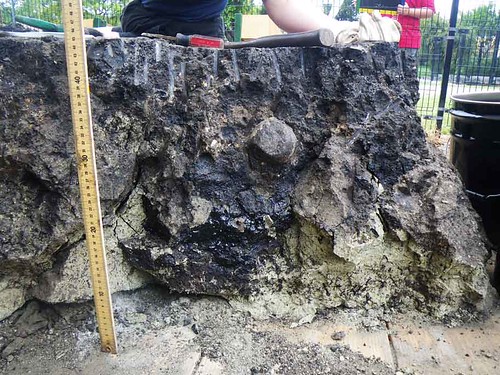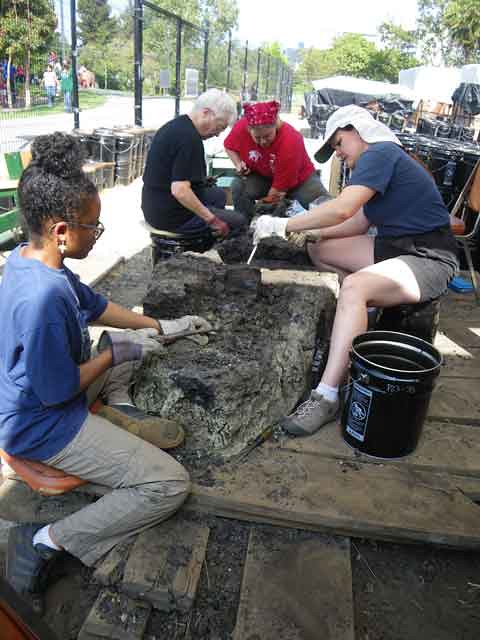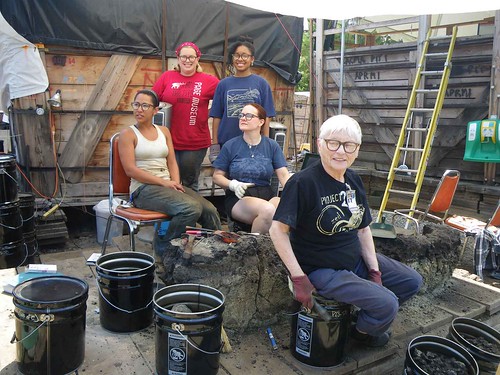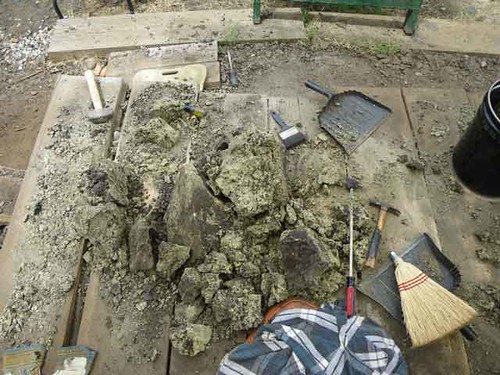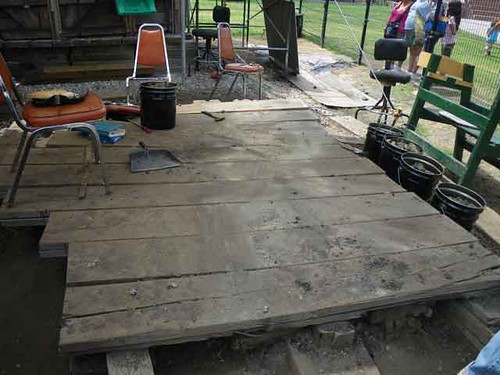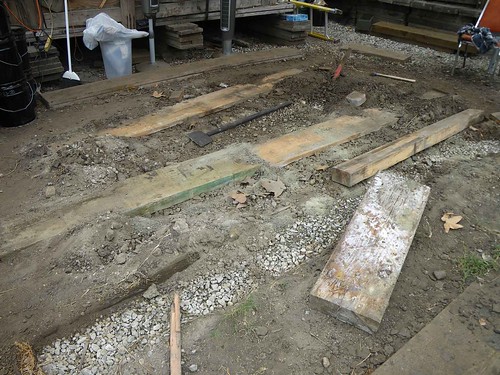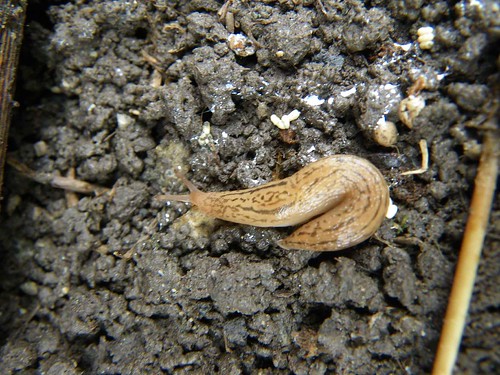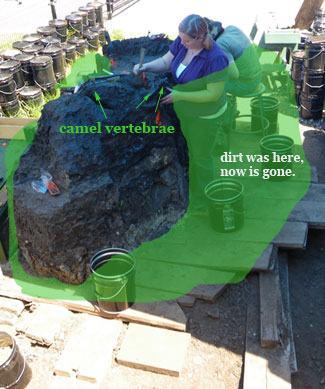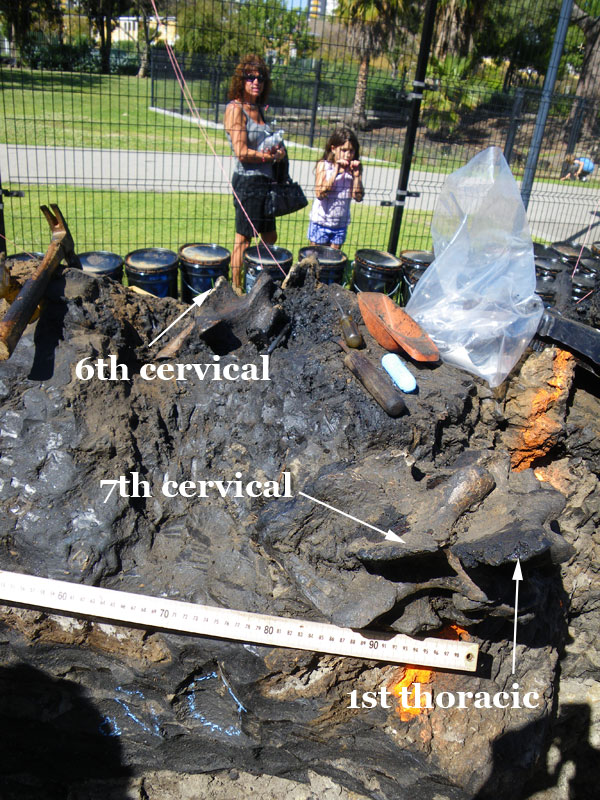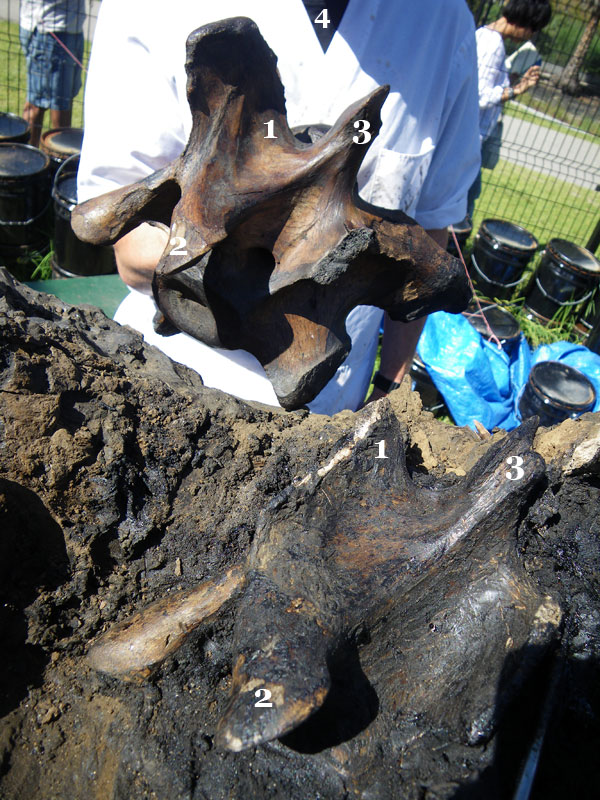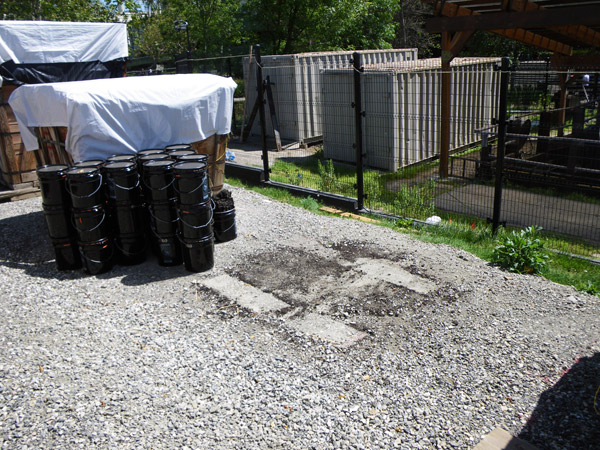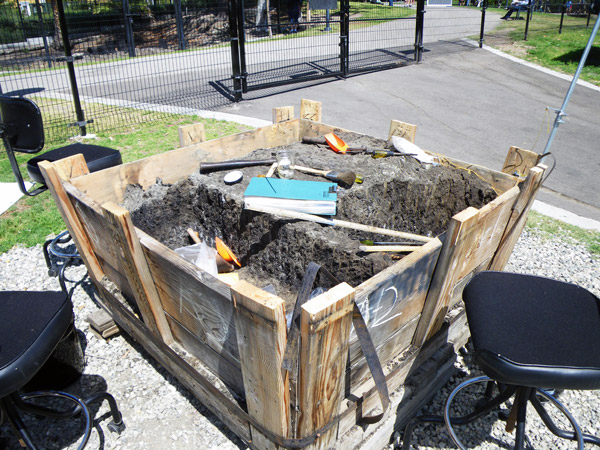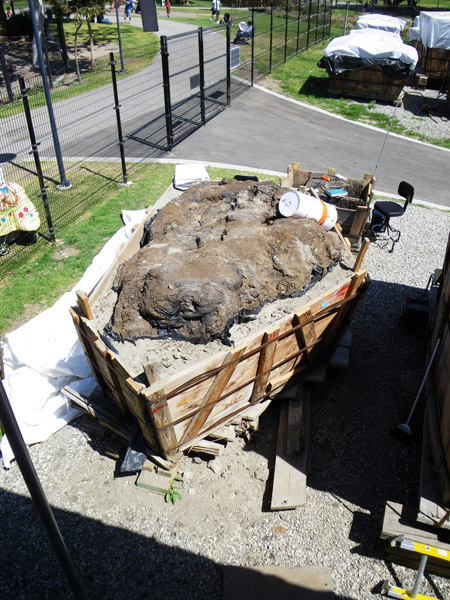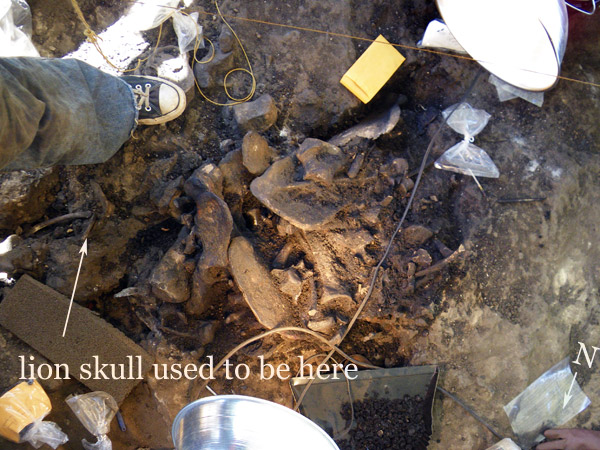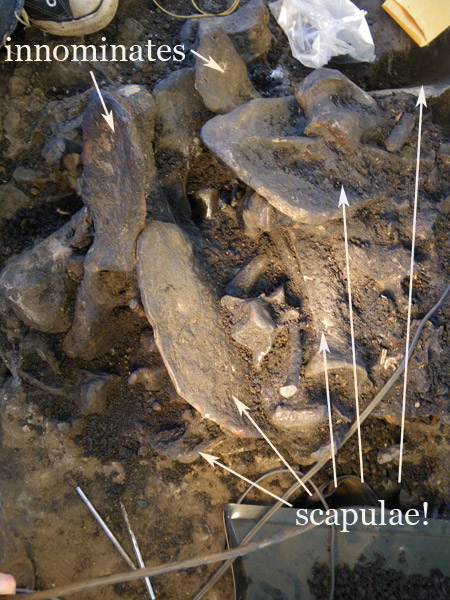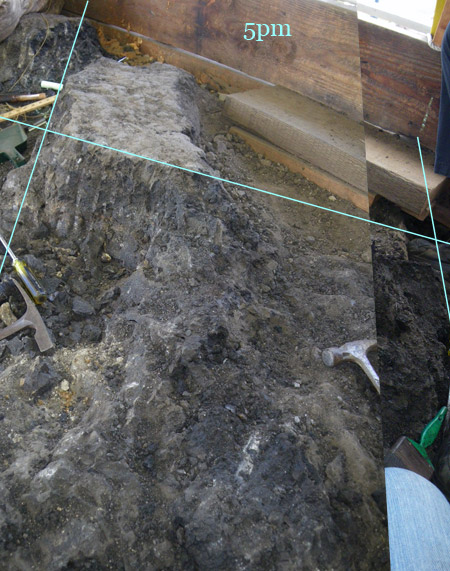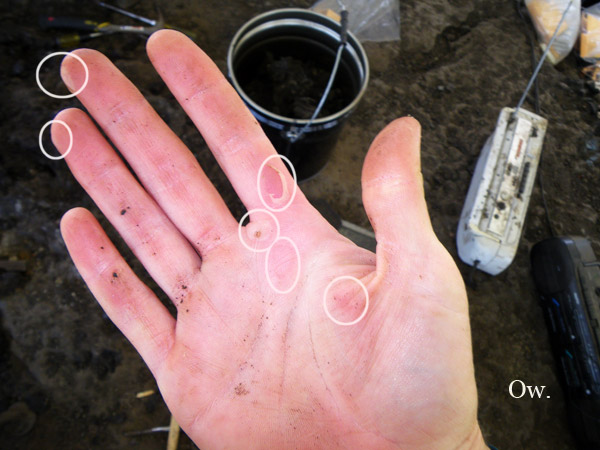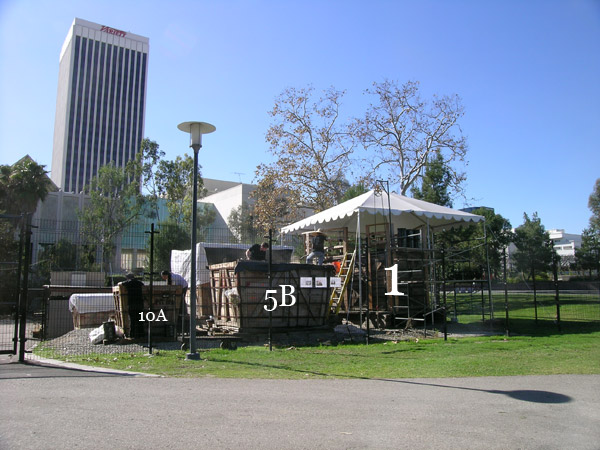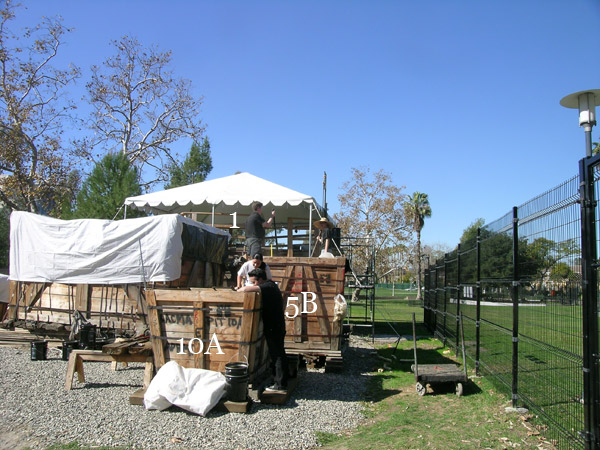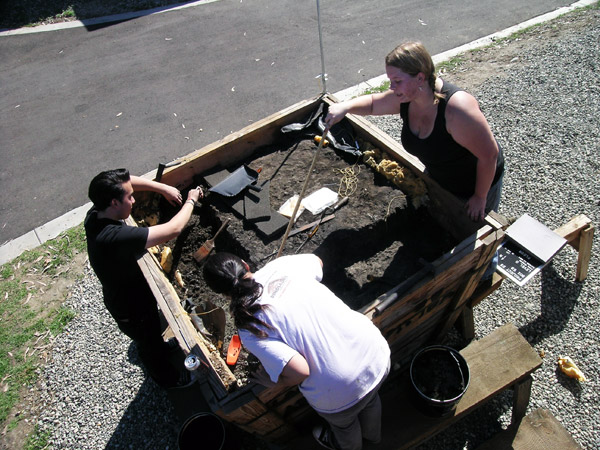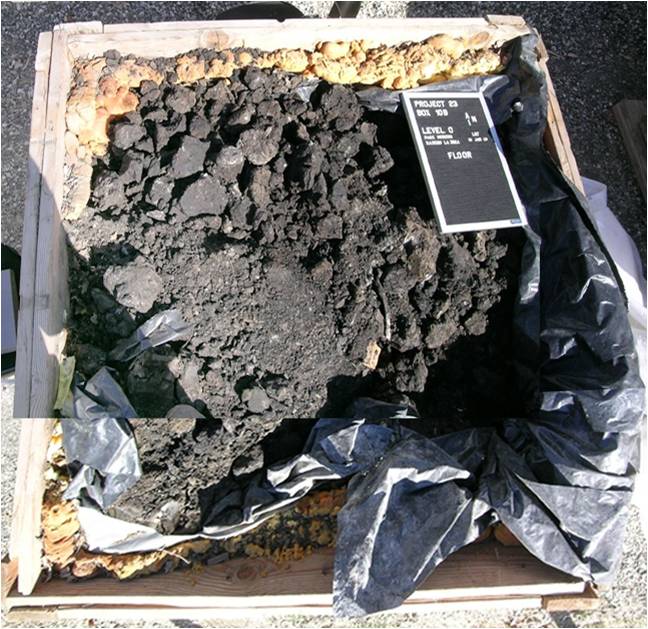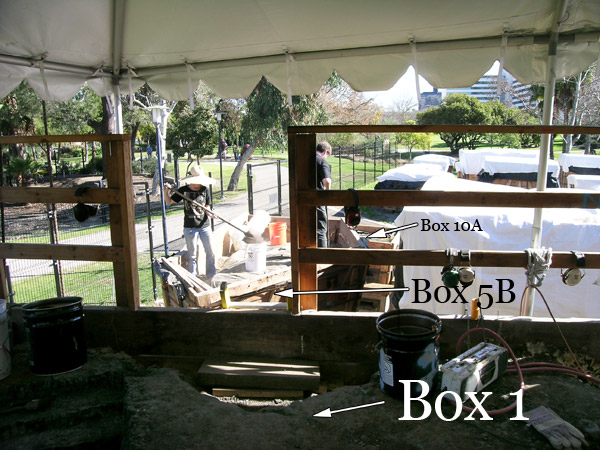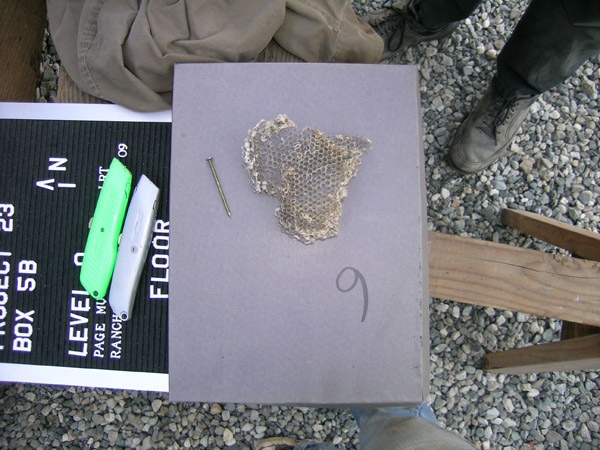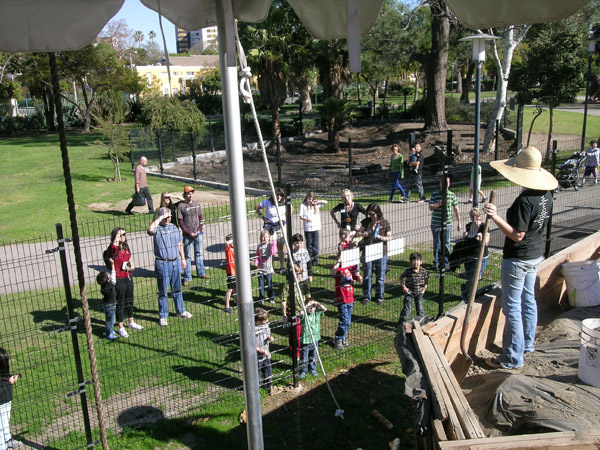Friends, I am torn, because on the one hand, I feel extremely bad for not posting for two months, but on the other hand, it is because we have been busy being amazingly productive paleontologists who do not have time for this new-fangled computer contraption -- we simply have too much dirt, too many bones, too much science. Am I to apologize for progress? I think not. But am I to apologize for poor journalism? Absolutely.
As penance, I humbly offer you easily enough material for three separate posts. Photo heavy, be warned.
This, as you may or may not remember (it
has been a long time, after all) is a rough map of the Project 23 compound (Pit 91 is the square to the south). We've finished 3 boxes (10A, 10B, and 7B, all x'd out), got half-way through another (7A, put on hold until we can better figure out what to do with it), and are still digging away in deposit 1. Deposit 5B is newly opened. 14 is currently slated to go next. For a better sense of scale, here's a photo of the compound from a couple months ago:
And here's a photo from shortly thereafter:
Woah! What happened to 5B??? Well I will tell you.
We took the sides off! Deposit 5B's box had warped somewhat treacherously from the get-go; its base was damaged in the move from LACMA to here. Rather than working around unweildy boards, we decided to experiment and take all the sides off at once. We hoped this would allow us to get a look at the deposit's stratigraphy straight away, so we can better anticipate where fossils will and will not be. We also hoped that the deposit wouldn't immediately fall apart...
As you can see in the photo above, we were fortunately (mostly) right on both counts: after removing all the boards, we were greeted by some really neat looking strata, and the block remained largely intact....
...after removing some of the looser chunks of earth. If we do this sort of thing again, I think we'll only remove the top half of the wooden crate. That way we'll still see the layers, but with some extra stability.
As in other deposits we divided this one up into grids, and are excavating one grid "column" at a time, and creating detailed stratigraphic drawings and lots of photos as we go.
So, as I said, one of the benefits of this excavation method is that we are getting a much better idea of the deposit's geology than we otherwise would, because we're looking at so much of it at one time. The contact between the asphalt and the surrounding silts and clays is
much more defined than we've seen in the other deposits from Project 23.
And as excavation has progressed, we've found that there are some truly unique and interesting things about this deposit:
1) there are two very distinct layers of asphalt within 5B-- likely from two different venting/entrapment episodes, and possibly thousands of years apart from one another... or maybe only 10 -- we won't know until we start carbon dating things. You can hopefully see them in the photo below -- one near the top surface of the deposit, and on near the bottom.
2) there is a partially articulated CAMEL (
Camelops hesternus) skeleton in the top layer! This is huge -- camels are fairly rare in our collections, and articulated skeletons are rarer still.
So far we've recovered its humerus:
and about 6-7 thoracic vertebrae:
That's the camel's skull up top, and a line of four thoracic verts below. Very exciting.
Meanwhile, in deposit 1, we are still digging away:
As I think I've mentioned before, there are several grids worth of broken bones in very hard sediment -- the dirt is harder than the fossils. It's difficult, slow work. We've started taking them out of large bone masses like this:
Awful looking, right? However, the strategic breaks made while taking the bone mass out of the ground SHOULD be easier to repair than the accidental ones made while trying to take each individual bone fragment out.
That having been said, after the block has been run through our brand new degreaser...
The bones come out looking great. This particular chunk had three dire wolf metapodials in it -- perhaps all from the same wolf paw:
Note how little of that matrix is made up of actual dirt -- by and large it's plant and bone material. We're still working the kinks out of our degreasing system: figuring out how best to operate it, how many people we need to run it, how best to sort through the resulting thousands of microfossils...
It's frankly overwhelming. We degreased a bucket of bones from the original APRMI salvage of the LACMA parking lot -- it was about 1/4 of the way full, and labeled "spoils" (i.e. not in situ, from pulled out of the ground by a tractor and left off to the side). The results:
Thousands of bones. In one 1/4 filled bucket. Eagle beaks, rodent teeth, a bird synsacrum...
a complete and perfect weasel dentary...
several dozen assorted rabbit, rodent, and bird elements...
tarsometatarsi from at least 4 different species of birds...
and last but not least a lizard jaw.
And that's just 1 out of 327 spoils buckets, not to mention the who-knows-how-many-hundred matrix buckets scattered throughout the compound...
Long story short: there's a lot of work to be done.
So, speaking of working: in the hopes of revitalizing this poor ignored blog, I'm thinking future posts will be faaaar shorter -- like, one photo and a paragraph -- but hopefully far more frequent. That way, you get more posts, and I can spend my Sundays doing Important Weekend Things like cleaning the tar out from my fingernails, getting the tar out from my laundry, and rollerblading (all at the same time? perhaps!), rather than writing about work when I'm not... actually... at... work. Not that I don't love the tar ranch! I just also love Venice Beach.
